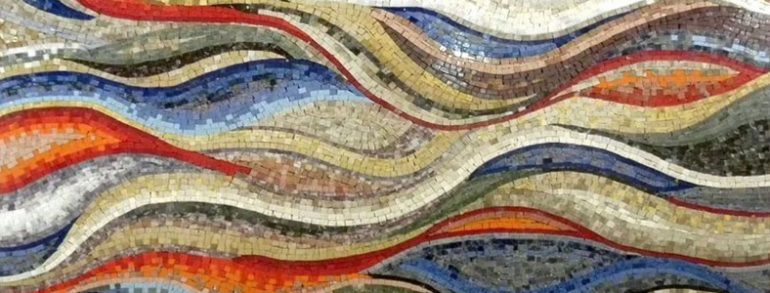Mosaic is an art form of pattern or picture created from the small pieces of glass, stone, or other materials in various colors. Those pieces, known as tesserae, are usually in the shape of a cube. Although the earliest known examples of mosaics were found in Mesopotamia dating to the late third millennium BC, mosaic patterns were not used until the times of the Sassanid Empire and Roman influence. There were two main techniques in Greco-Roman mosaic.
The first technique was opus vermiculatum, which used tiny tesserae, typically cubes of 4 mm or less. These were produced in workshops, and then they were transported to the site. The tiny tesserae allowed very fine detail. Often, small panels called emblemata were inserted into walls or floors.
The second technique was opus tessellatum. In this practice, larger tesserae were used and they were laid on site.










